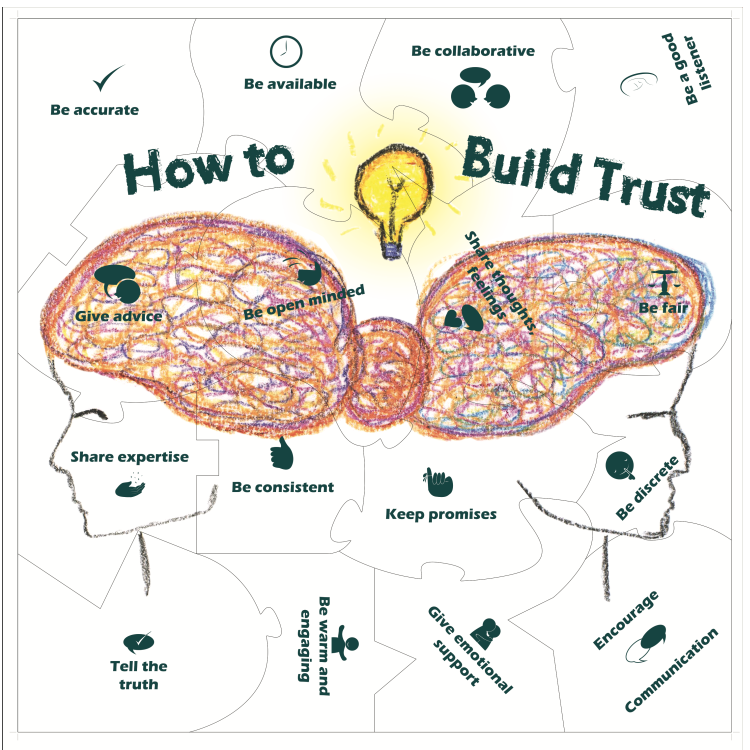Ollie Gardener met many fascinating people at Online Educa 2015. Amongst them was Chief Chaos Organiser, Stephanie Barnes of Missing Puzzle Piece Consulting. They soon hit it off and started talking about trust within Communities of Practice and thought it would be great to share their thoughts and ideas behind it in a guest blog. Here is that blog - Stephanie Barnes on Communities of Practise and Trust.
Communities of Practice and Trust
Communities of Practice (CoP) are but one of the myriad of knowledge management activities that an organisation may choose to involve itself in, CoP’s help share knowledge and expertise, they share best practices and can help solve problems. They can help make organisations more innovative through the sharing of diverse experiences and backgrounds.
How do we do this? How do we help our CoP’s live up to their reputation?
We can create a knowledge management strategy that ensures that the CoP’s align with our organisational goals and objectives while also ensuring that the CoP’s are part of a comprehensive plan to enable knowledge activities across the organisation.
We can create the infrastructure to support them: training and education that help people understand their roles and responsibilities within the CoP; technology that helps them share documented knowledge, collaborate with each other, and discover what each other knows; and processes to help create, store, maintain, distribute, and archive/delete/forget knowledge.
Are these activities enough on their own to create successful knowledge sharing within a CoP or is something missing?
Where is trust in this equation of strategy, people, process, and technology?
Trust is one of the underlying criteria for successful knowledge management. In primary research done by Max Evans in 2012 it was found that the following activities were key to knowledge sharing:
- Trust
- Shared vision
- Shared language
- Tie strength [1]
So, what does trust look like and how do we build it if it is weak/non-existent?
The image below was prepared by Queenie (Tihmily) Li based on an anonymous drawing for the “In knowledge we trust,” exhibit at the Ontario Science Centre, in Toronto and based on Max Evans’ research;

So how do we improve our personal trustworthiness and the trustworthiness of those we work with?
We honestly assess our abilities in each of these areas and adopt/improve these behaviours and actions in our daily lives and witness the change in our relationships and our ability participate in knowledge sharing activities.
John Baldoni wrote an article for Harvard Business Review about this very subject, the article is found here and links to a short self-assessment.
If we want to improve the trustworthiness of our organisations, we work with the members of our organisation to improve these activities. We do things like tell the truth even when it’s hard, we keep promises and do what we say we’re going to do, we share experiences, and give support.
So is trust a part of your KM/CoP strategy?
Stephanie Barnes is a a passionate advocate for knowledge management through the alignment of people, process, and technology to meet organisational goals and objectives. Since 2012 she has been inspired to integrate creativity within her work in knowledge management consulting.
Check out Stephanie’s art at www.stephaniebarnesart.com
Read Stephanie’s latest blog post on Knowledge Management and creativity.
[1] Knowledge Sharing: An empirical study of the role of trust and other social-cognitive factors in an organizational setting by Michael Max Evans, 2012, accessed January 8, 2016
Find out more about how Noddlepod can be used as a knowledge sharing tool for CoP.